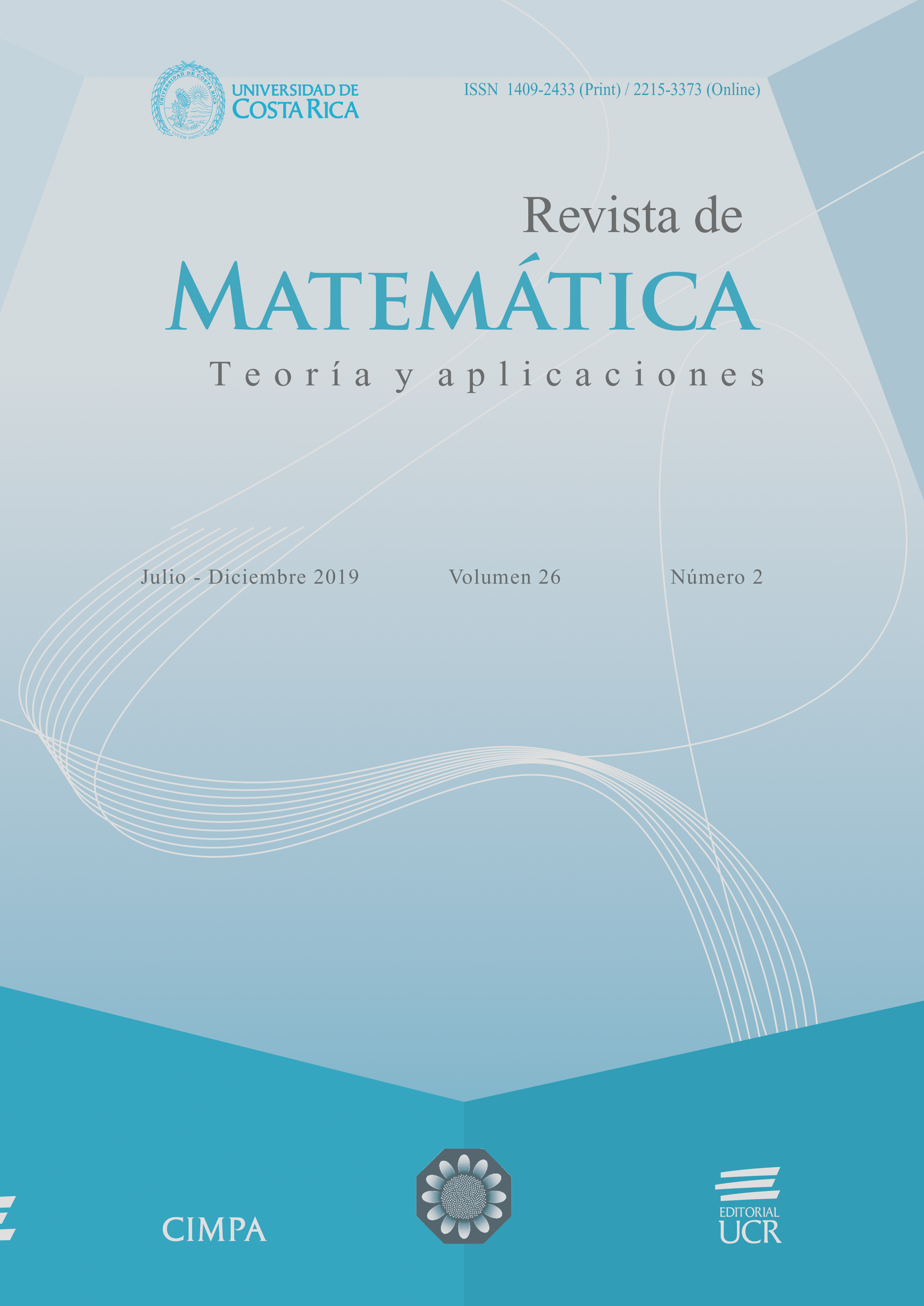Abstract
Through cryptography, be modified and hide certain information, so that only a certain group of people can interpret it through a key. When trying to use various fields of mathematics for this process, the concept of
mathematical cryptography is developed.
Most mathematical cryptographic methods focus on number theory. Also, there are other cryptographic methods in the area of quantum physics and algebraic geometry, particularly hyperelliptical curves defined over finite bodies and finite fields. This paper introduces a new method of mathematical cryptography with signal processing techniques, through of a dimensional harmonic representations such as the discrete ambiguity function. This paper uses two equivalent definitions in module discrete ambiguity
function.
This new cryptographic method uses the concept of symmetric key to making the process of encrypting and decrypting the message.
References
M. An, A. K. Brodzik, R. Tolimieri, Ideal Sequence Design in Time-Frequency Space: Applications to Radar, Sonar, and Communication Systems, Applied and Numerical Harmonic Analysis, Birkhäuser, 2008.
J. J. Benedetto, J. J. Donatelli, Frames and a vector-valued ambiguity function, 42nd Asilomar Conference on Signals, Systems and Computers, 2008, pp. 8–12.
J. J. Benedetto, I. Konstantinidis and M. Rangaswamy, Phase-coded waveforms and their design, IEEE Signal Processing Magazine 26 (2009), no. 1, 22–31.
B. Boashash, Time Frequency Signal Analysis and Processing: A Comprehensive Reference, Elsevier, 2003.
M. An, A. K. Brodzik, R. Tolimieri, Ideal Sequence Design in Time- Frequency Space: Applications to Radar, Sonar, and Communication Systems, Applied and Numerical Harmonic Analysis, Birkhäuser, 2008.
J. W. Cooley, J. W. Tukey, An algorithm for the machine calculation of complex Fourier series, Mathematics of Computation 19 (1965), no. 90, 297–301.
P. J. Davis, Circulant Matrices (Pure & Applied Mathematics), Chelsea Publishing Series, Chelsea, 1994.
F. Franchetti, M. Puschel, Y. Voronenko, S. Chellappa, J. M. F. Moura, Discrete fourier transform on multicore, IEEE Signal Processing Magazine 26 (2009), no. 6, 90–102.
G. H. Golub, C. F. Van Loan, Matrix Computations, Johns Hopkins Studies in the Mathematical Sciences, Johns Hopkins University Press, 1996.
A. Graham, Kronecker products and matrix calculus with applications, Ellis Horwood series in mathematics and its applications, Horwood, 1981.
J. Hoffstein, J. Piphe, J. H. Silverman, An Introduction to Mathematical Cryptography, Undergraduate texts in mathematics, Springer, New York, 2008.
J. R. Johnson, R. W. Johnson, D. Rodriguez, R. Tolimieri, A methodology for designing, modifying, and implementing Fourier transform algorithms on various architectures, Circuits, Systems, and Signal Processing
(1990), no.4, 449–500.
A. J. Menezes, P. C. van Oorschot, S. A. Vanstone, Handbook of Applied Cryptography, Discrete Mathematics and Its Applications, CRC Press, 1996.
C. D. Moravitz, C. F. Van Loan, A jacobi-type method for computing ortogonal tensor decompositions, SIAM J. Matrix Anal. Appl. 30 (2008), no. 3, 1219–1232.
P. A. Regalia and S. K. Mitra, Kronecker products, unitary matrices, and signal processing applications, SIAM Rev. 31 (1989), no. 4, 586–613.
M. S. Richman, T. W. Parks, R. G. Shenoy, Discrete-time, discretefrequency, time-frequency analysis, IEEE Transactions on Signal Processing 46 (1998), no. 6, 1517–1527.
P. Soto-Quirós, A mathematical framework for parallel computing of discrete-time discrete-frequency transforms in multi-core processors, Applied Mathematics & Information Sciences 8 (2014), no. 6, 2795–2801.
J. P. Soto-Quirós, D. Rodríguez, Representación matricial de algoritmos en paralelo de la transformada discreta de Fourier, la función discreta de ambigüedad y la distribución discreta de Cohen, Gaceta de la Real Sociedad Matematica Española 16 (2013), no. 3, 479–500.
R. Tolimieri, M. An, C. Lu, Algorithms for Discrete Fourier Transform and Convolution, Signal Processing and Digital Filtering, Springer, New York, 1997.
P. M. Woodward, Probability and Information Theory: with Applications to Radar, McGraw-Hill, New York, 1953.
##plugins.facebook.comentarios##

This work is licensed under a Creative Commons Attribution-NonCommercial-ShareAlike 4.0 International License.
Copyright (c) 2019 Revista de Matemática: Teoría y Aplicaciones





